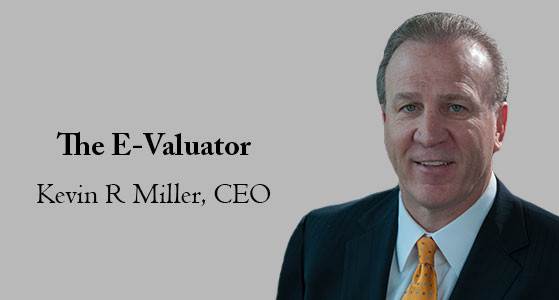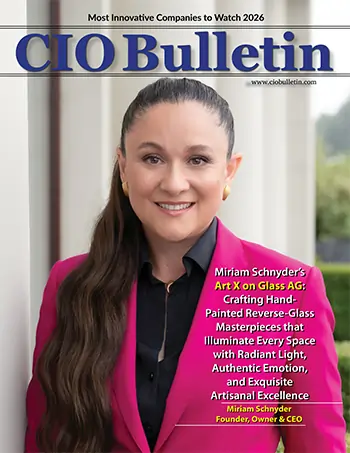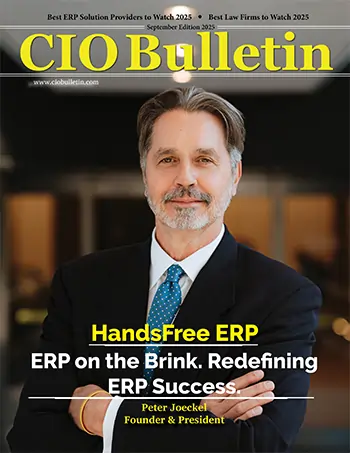30 Most Influential Companies of the year 2020 (Special Edition)
CIO Bulletin

Managing assets for small as well as large companies has always been a demanding task. The evaluation and funding of a company’s assets take an immense amount of time, work, and effort. The E-valuator is one such company that provides a well thought, analytical software program for asset management. We had a conversation with Kevin R Miller, who has over 30+ years of experience in the financial service industry, to share his thoughts and vision about his innovative software solution.
Tell us about the company's history.
The concept behind The E-Valuator came from my perceived void in the investment industry between the Investor’s ability to define and communicate their suitable level of performance, and the Advisor’s ability to document those performance expectations then be able to efficiently manage a customized portfolio accordingly. While striving to accomplish this concept, The E-Valuator’s primary goal for the Investor was to “simplify the complicated.” In addition to mitigating the Advisor’s fiduciary liability, the primary goals for the Advisor were to reduce the Advisor’s time and expense associated with portfolio management, servicing, and reporting while elevating their ability to deliver a higher customized Investor experience.
By using The E-Valuator software, the Investor can directly communicate their level of acceptable performance to the Advisor and easily comprehend the highly visual reports. The Advisor can quickly document each Investor’s performance expectations, and then utilize the system’s ability to apply these settings against the investment universe to oversee, manage, and report on each Investor’s Portfolio.
What is that breakthrough moment where you felt proud of The E-Valuator?
There have been two significant breakthroughs that I can recall. First, in our effort to give back to our industry, we have several Universities throughout the United States that use our software as part of their curriculum. As a result, we have created a “national competition” among students, so the student with the best Portfolio is recognized with a national trophy at the end of the semester. The top student at each University receives a personally engraved crystal plaque. The second breakthrough moment came in 2019 when we were recognized as a finalist at the annual Wealth Management.com awards banquet. In 2020, Wealth Management.com recognized our application as an industry-leading fiduciary liability mitigation tool by naming us the winner in their “401k/Retirement Plan Support - Technology” category.
What are The E-Valuator's vision and mission?
E-Valuator’s overriding goal is to help Advisors mitigate their fiduciary liability while assisting Investors with improving theThe success of The E-Valuator as an analytical tool led us to launching six collective trust funds in February 2012, with this software as the backbone of the underlying investment selection and monitoring process. In May 2016, these collective trust funds were transformed into open-end mutual funds so IRA Investors could have access to them. The E-Valuator Risk Managed Strategy (RMS) fund family consists of six mutual funds that are a fund-of-funds and have approx. $640 million in assets. The success of these Funds as measured by their performance relative to the performance of their Morningstar peer group is a testament to how well this software performs.
What are your six investment options?
The E-Valuator Risk-Managed Strategy (RMS) fund family has six asset allocation funds, with each delivering a comprehensive asset management service across varying degrees of equity allocation. The equity allocation (minimum and maximum) can be found in the naming convention of each fund. For instance, The E-Valuator Moderate (50%-70%) RMS fund will always have at least 50% of its asset allocated into stocks but will never have more than 70% of its allocated into stocks. A part of the asset management service that takes place inside these investments is the continual monitoring and adjusting of the equity allocation within the range for each based on varying economic conditions. In addition to actively managing the asset allocation, some other asset management services found inside each Fund includes expense management, risk management, re-balancing, tax harvesting, lagging investment replacement, and continual monitoring of the investment universe (mutual funds and ETF’s) for superior performing investments. The names, and ticker symbols, of our Funds are:
What is Performance Tolerance? How is it helpful?
Performance Tolerance establishes the Investor’s performance expectations pertaining to superior performance and lagging performance. Superior performance is the level of return above the peer group average suitable to the Investor. Lagging performance is the level of performance below the average of the peer group that will not be tolerated by the Investor.
Since the first level identifies the amount of excess return above the peer group average an Investor is seeking, a higher setting would be commensurate with a more demanding Investor while a lower setting would be associated with a more passive Investor. As an example, a setting of +20% would indicate the Investor is seeking to out perform the peer group average return by 20%, while a setting of +5% would indicate the Investor would be content if their investments out performed the average of their respective peers by 5% (more passive).
Because the other level of Performance Tolerance pertains to lagging performance, a more demanding Investor would not allow for much lagging performance and would want this setting to be a lower number while a more passive Investor with more tolerance toward lagging performance would be comfortable with a higher number for this setting. As an example, a more demanding Investor may allow for lagging performance 15% below the average of the peers. If this were the case, they would have this setting at -15%. A more passive Investor might place this setting at -30%, which would allow an investment to lag the average of its peers by up to -30% before the performance becomes intolerable.
In addition to Performance Tolerance another element is Duration Tolerance. The Duration Tolerance setting applies the number of months an Investor is willing to tolerate lagging performance until replacement of the lagging investment is warranted. Duration Tolerance settings range from 1 month to 15 months. A longer Duration Tolerance setting represents a more passive approach to investment oversight because the Investor is willing to give the mutual fund, or ETF, more time to recover from its lagging performance.
Lastly, the Advisor, and/or the Investor, would select which timeframes to apply these settings against, i.e. 1-month, 3-month, 1-year, 3-year, 5-year, etc. And they can “weight” these timeframes based on the level of influence each timeframe should have on the analysis of their Portfolio. For instance, an Investor with more of a long-term perspective may prefer to apply their settings against longer time horizons (5-10 years) with no consideration for short term performance.
The E-Valuator software receives nightly downloads on the performance of every mutual fund and ETF in the Morningstar, Inc. database and updates (refreshes) every Investor’s account by the next morning. The time frames that are a part of this daily data feed include: 1-month, 3-month, 6-month, 1-year, 2-year, 3-year, 4-year, 5-year, 6-year, 7-year, 8-year, 9-year, and 10-year.
How will The E-Valuator help companies be up-to-date with performance tracking?
As noted, The E-Valuator software updates each Investor’s account daily. From a reporting perspective, The E-Valuator software allows the Advisor to select the month, day, and frequency reports will be delivered to the Investor, based on each Investor’s personal preference. The Advisor selects the reports from the Reports Menu, and the E-Valuator’s automated reporting capabilities will do the rest. The E-Valuator uniquely incorporates color-coordinated reporting schematics to make the reports highly visual, easily comprehendible, to simplify the complicated.
Explain about Investment Finder, and how does it help your customers’?
The Investment Finder serves two purposes. First, it is used during the creation of a Portfolio to find the most suitable investment(s) based on each Investor’s setting preferences. Secondly, it applies the Investor’s customized settings to the mutual Fund and ETF universe to identify the most suitable replacement investments if/when a lagging investment warrants replacement. The Investment Finder applies each Investor’s customized settings against the 35,000+ mutual fund/ETF universe daily and presents the most suitable investments by sorting them from best to worst.
About the CEO
Kevin R Miller has over 30+ years of experience in the financial service industry. At 34 years of age, he acquired a third-party administration firm (Fringe Benefits Design of Mn, Inc.) that provides administration and recordkeeping services to qualified plans and IRA accounts exceeding $1.1 billion. In the mid-to-late 2000s, he created The E-Valuator software to fill the void that existed with the industry’s inability to document and meet a client’s preferential performance demand. In 2012, The E-Valuator, LLC, was created to make this a web-based service available to advisors throughout the United States. In 2016, he launched six open-end mutual funds (The E-Valuator RMS Funds) that provide a complete asset management service with stated minimum/maximum equity allocation strategies. He is currently testing a new application that systematically transitions an Investor’s assets into a lower risk investment allocation as the liquidation date draws near. This new application uses artificial intelligence to help advisor operate more efficiently at a higher profit margin without sacrificing the customization investors demand.

Insurance and capital markets







